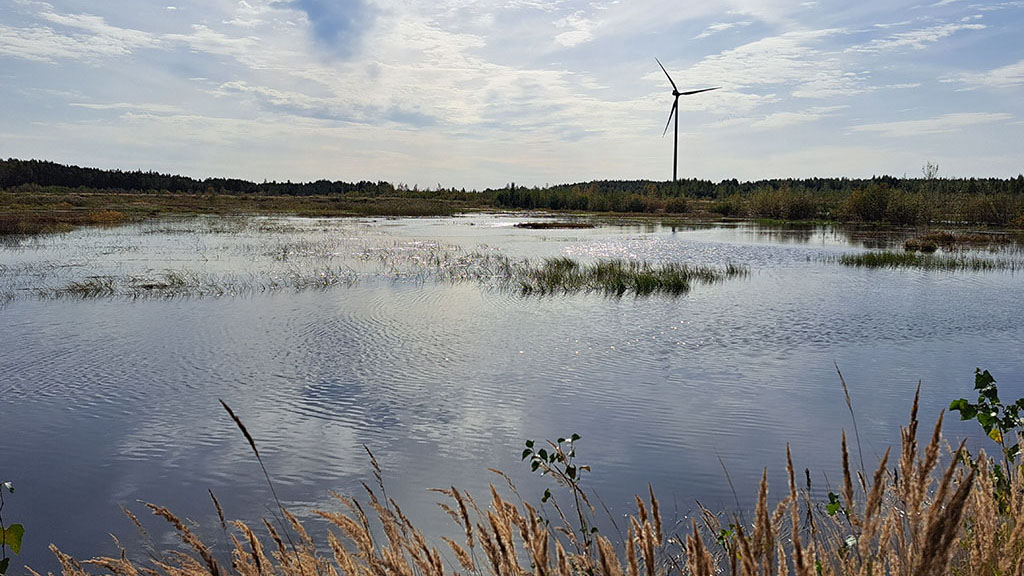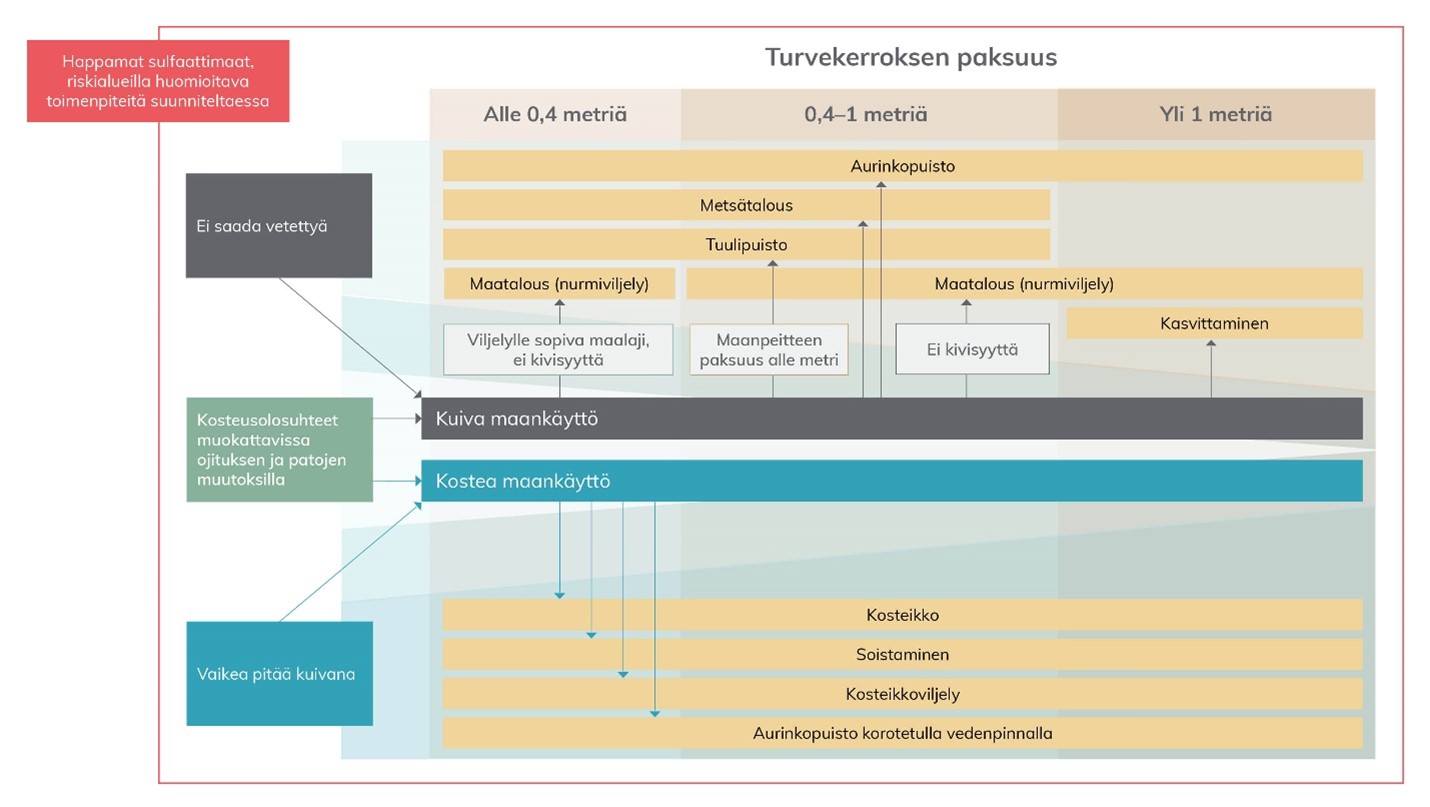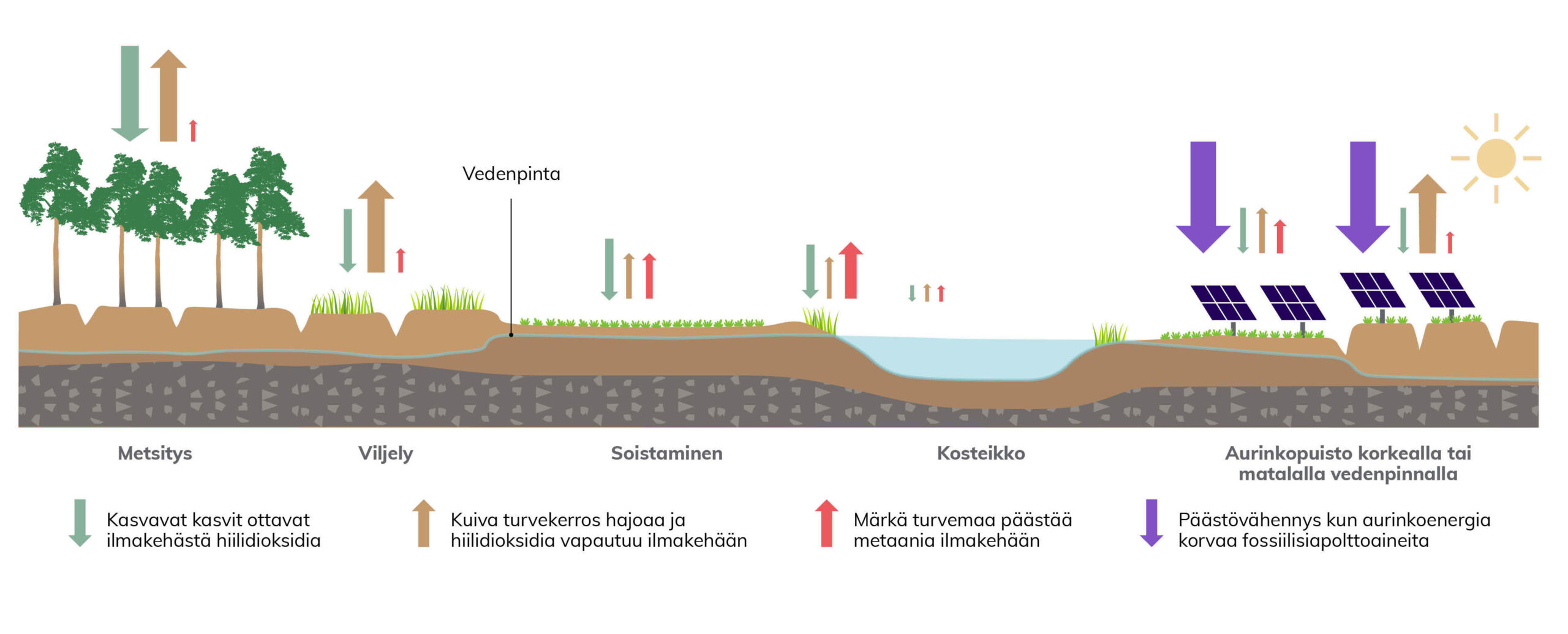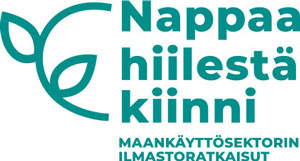Climate-wise Solutions for the After-use of Peat Extraction Sites – New Landowners’ Guide Summarises the Different Options
As peat production declines rapidly, more peat production areas will be transferred to other land uses. In addition to conventional forms of after-use, new alternatives and more versatile use of the areas have emerged. Many landowners are considering new use for their lands after peat production. Planning the after-use should start when peat is still produced. This provides time and opportunity to consider several options, reflect on the objectives and find suitable solutions.

Information on the area and the suitability and economic viability of different forms of land use is needed when planning after-use. It is also important to investigate whether there are any legal obligations before deciding. Landowners should also take into account the potential financial support available for planning and implementation.
It might be hard for landowners to collect information from different sources on the best alternatives for their former peat extraction sites or their impacts on climate and the environment, for example.
A new guide for the after-use of peat extraction sites combines the research results of several projects funded by the Ministry of Agriculture and Forestry bringing together the latest research data to support landowner’s decision-making.
Guide for landowners and land use planners
The ´Climate-wise solutions for the after-use of peat extraction sites` website presents options for after-use of peatland and for the stages of planning and decision-making.
Each landowner has their own starting points and goals for the new use of their land. They should consider the alternatives for after-use presented on the website from their own perspective and select the solutions that are most relevant to their goals. The website provides tips for preparing and implementing a plan for different forms of land use, whether you carry out the work yourself or purchase the service.
The guide is primarily aimed at landowners of peat production areas, experts providing advice to landowners, and the authors and implementers of after-use plans.
New trends in after-use options
After peat production has been discontinued, the area will have different subareas that are suitable for different types of land use. Due to the surface elevation profile of the peatland, some parts of the area may be drier and some wetter. The thickness of peat may also vary considerably.
The alternatives for after-use can be roughly divided into dry and wet land use. The guide presents a selection chart that starts with an assessment of the wet/dry conditions in the area – whether the area can be rewet or whether it should remain dry. The presence of acid sulfate soils imposes restrictions in some areas.

Information on the moisture conditions in the area, the thickness of the peat layer and the soil type and its properties help the landowner to ensure that the type of after-use is suitable for the area. At best, selecting a suitable type of land use promotes both environmental and social impacts.
New alternatives have emerged alongside conventional after-use (afforestation, cultivation, wetlands), such as restoration (mire formation) and renewable energy production, especially solar energy. More research on new alternatives is urgently needed, especially in Finnish conditions, and new studies on conventional alternatives complement previous observations.
The guide assesses the environmental impacts of different types of after-use from the perspective of climate change, the load on water bodies and biodiversity. The social impacts of after-use alternatives have been examined in terms of landscape and recreation as well as the economy and employment.
As the time span for after-use planning is often relatively short, it is important to develop flexible and easy-to-use tools to help with the planning.

Research cooperation as the basis for the guide
The Ministry of Agriculture and Forestry’s ´Catch the Carbon` wetland projects examined the types of land use in areas freed from peat production and developed methods for planning and implementing after-use. From the beginning, the projects cooperated closely with each other in the coordination of research areas.
A scientific article and the ´Climate-wise solutions for the after-use of peat extraction sites` website were published as a result of the cooperation. The guide is also available on ELY Centres’ website for the after-use of peat production areas.
Further information
Story Map (in Finnish): Ilmastoviisaat ratkaisut turvetuotantoalueiden jatkokäyttöön (Climate-wise Solutions for the After-use of Peat Extraction Sites)
Joint article of the research projects: After-use of peat extraction sites – A systematic review of biodiversity, climate, hydrological and social impacts
The Ministry of Agriculture and Forestry’s Catch the Carbon projects related to changes in land use and wetlands
Tuija Vähäkuopus, Team Manager
Geological Survey of Finland GTK
tuija.vahakuopus@gtk.fi
tel. +358 29 503 5224
Project: Planning for the Carbon Smart After-Use of Peatlands (Jälkihiili)
Tiina Ronkainen, Chief Specialist
Tapio Oy
tiina.ronkainen@tapio.fi
tel. +358 29 432 6035
Projects:
(in Finnish) Turvetuotantoalueiden ilmastokestävät jatkokäyttömahdollisuudet (TuIJa)
(in Finnish) Valuma-aluekunnostusten valtavirtaistaminen: uudet lähestymistavat, skaalautuvuus ja muuntuvuus – toimintamalli turvetuotantoalueen jatkokäytön suunnitteluun (MERLIN)
Aleksi Räsänen, Senior Scientist
Natural Resources Institute Finland (Luke)
aleksi.rasanen@luke.fi
tel. +358 50 562 4400
Project: Comprehensive assessment of climate measures in catchments – with system analysis towards carbon-neutral land use (SysteemiHiili)
Airi Matila, Forest Specialist
Tapio Oy
airi.matila@tapio.fi
tel. +358 29 432 6041
Project: (in Finnish) Metsitys kestävästi
The projects are part of the Catch the Carbon climate action programme launched by the Ministry of Agriculture and Forestry of Finland in spring 2020, which aims to reduce the greenhouse gas emissions from agriculture, forestry and other land use and to strengthen carbon sinks and storages.

